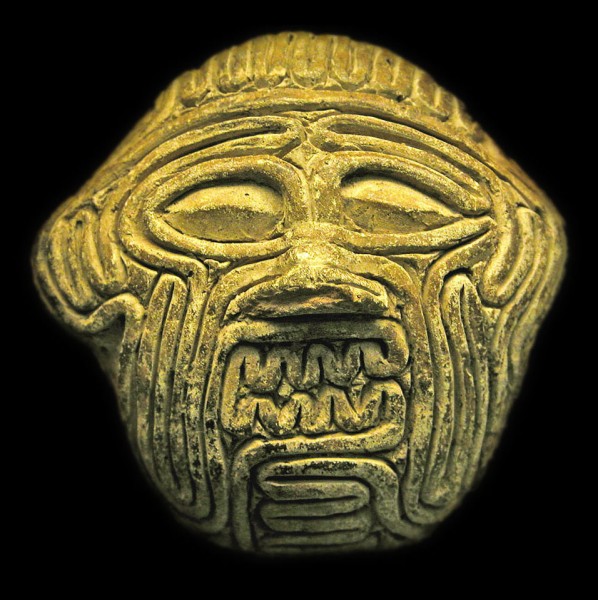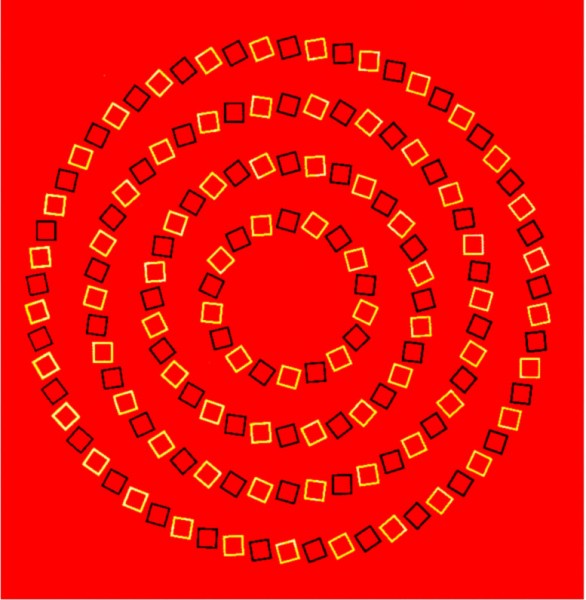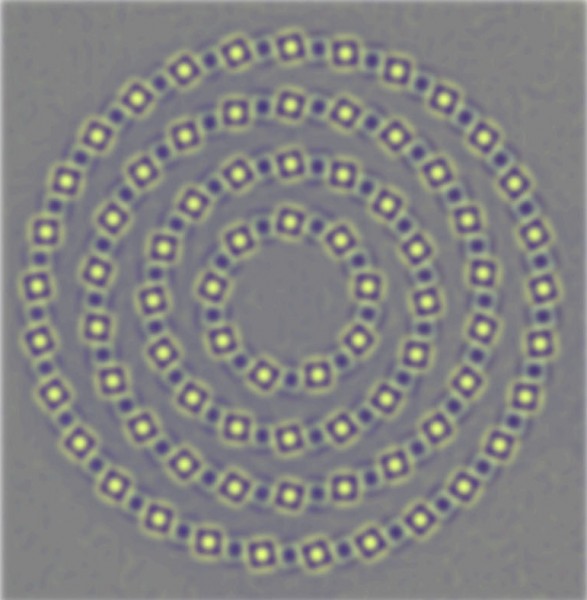This is one of the oldest ambiguous images I know. It’s a small clay mask from Mesapotamia, (in modern day Iraq), made about 3750 years ago. It’s the face of the giant Humbaba, but as he might have appeared to a soothsayer, looking into the writhing entrails of a sacrificed animal for purposes of divination. If the face of Humbaba appeared in the entrails, in the way we sometimes see a face in clouds, it was a sign of revolution on the way. This evocation of the experience is in the British Museum, and they have a web page about it. (They even know the soothsayer who made it …).
I’ve written in earlier posts about the way that artists often seem to use perceptual puzzles as a starting point for aesthetic and emotional effects in artworks. This is a particularly fascinating example. It’s a work of art, but it’s also a record of emotional effect arising out of a perceptual puzzle, an ambiguous image, in a quite different kind of activity – divination. If I’ve got it right, quite a lot of fortune telling starts with ambiguous visual discoveries like this, when peering into tea-leaves, or crystal balls. I wonder how deep the common roots of aesthetics and shamanistic experiences go.
One route you can trace is through the entrails. You can’t quite be sure in this image, but when you look at the real thing, so you can look round the edges, the face is made up of one continuous entrail, coiling to and fro. If you can get to the British Museum, it’s in a case in their new Mesapotamia gallery, but you may have to hunt around, it’s not big.



